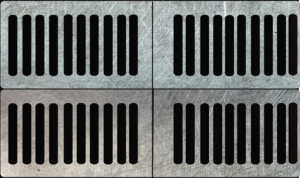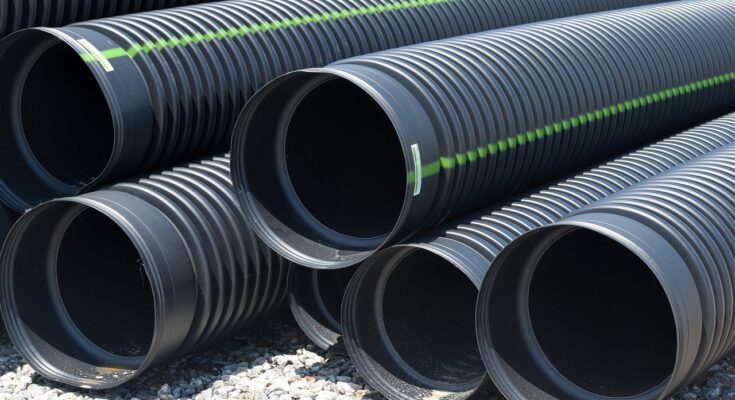Introduction:
Drainage systems are essential for the easy management of water. Besides, supplying natural systems with sound drainage helps control destructive floods.
Terrain type is also diversified; thus, there are facilities for drainage in urban areas as well as in agricultural ones. This article aims to demonstrate the different forms of drainage, the purposes for which people use them, and their advantages.
1. Surface Drainage Systems
Surface drainage systems divert excess water from the surface of a piece of land.They are usually applied where much precipitation or flooding is likely. These systems are based on limited depressions or Microsoft gradients that manage Flood flow through water structures such as streams, rivers, reservoirs, and stormwater drains.
Key Features:
They are straightforward to establish and can also be very easy to manage or maintain.
It does not allow water to accumulate on the roads, fields, or any other uneven surface area.
He is commonly used as a fertilizer in agricultural fields, sports grounds, and urban roads.
Examples:
Open drains along roads.
The field drains into the agricultural lands.
2. Subsurface Drainage Systems
Slab drains, French drains, or tile drainage deals with water that percolates into the ground surface. Such systems utilize a web of pipes/tiles placed in the ground to drain water from the root zone of the soil.
Key Features:
Proposes the capacity of water absorption in soil and thus promotes plant growth.
Often applied in such regions with problematic water tables like poor drainage of soils.
It demands specialized design and installation, rates moderate environmental sensitivity, and uses paved flooring and a sound drain system.
Applications:
Horticultural lands to cover plants to minimize risk from water logging.
To stop water outflow from these basements into residential areas and minimize potential damages to foundation systems.
3. Slope Drainage Systems
Engineers design slope drainage systems to ensure proper and effective drainage of water on a given slope.Such systems often include the use of pipes or channels arranged in a gradient in a bid to avoid erosion and damage to structures.
Key Features:
It saves slopes from washing, which could be created by water.
Reduce the possibility of landslides and unstable soils.
Applications:
Hillside developments.
Road embankments.
Sites that involved elevated construction or graded construction plans.
4. Downspout and Gutter Systems
These systems are among the critical infrastructure aspects of houses and business premises, and their primary function is to guide rainwater from rooftops to a disposal point effectively.
Key Features:
It helps stop water accumulation on rooftops, thus reducing damage to roofs.
Preserves the base and avoids erosion of the ground on structures.
Applications:
Residential homes.
Stores, offices, factories, and other similarly constructed property.

5. Sustainable urban drainage is a complex of constructed facilities that allow for managing local water surpluses.
SuDS are sustainable approaches to controlling surface water runoff in urban settings. They are designed to replicate water drainage systems and minimize the effects of urbanization on water catchment systems.
Key Features:
Best Urban practices include permeable surfaces, green roofs, swales, and retention basins.
Enhance the quality of water by trapping contaminants.
Groundwater recharge is one of the benefits that the use of various traditional technologies encourages by playing an essential role in recharging the groundwater replenishment in the process.
Applications:
Lifestyle opportunities and a sustainable world for citizens living in smart cities.
Children playing in neighborhood parks and other access areas.
6. Point Drainage Systems
Unique drainage systems precisely capture water from specific areas, including but not limited to flood zones and structural interiors, and then transfer the water to a significant drainage line.
Key Features:
They are very efficient when used for collecting water at a central point.
People often find it connected to underground piping systems.
Applications:
Parking areas and hall interiors.
Courtyards and sports arenas.
7. Combined Drainage Systems
Sewerage and stormwater systems are intertwined; they are two separate systems that function by using a single organization of pipes to go through. As much as they are affordable, these systems can be bogged down during a downpour, which might result in an overflow.
Key Features:
Cost-efficient solution for the problem perceived predominantly in large cities.
Housing requires an advanced design to keep the structures manageable.
Applications:
Large urban centers, where there is a lack of physical space for the construction of parallel systems.
The rural areas and small towns are the developing regions of the world.
Conclusion
Selecting the correct drainage system will be highly relevant to the effectiveness of supplying water for consumption and custody, safeguarding the structures and the surrounding natural surroundings. The kind of system to apply also varies with the geographical characteristics, including the terrain, the type of soil available, and the town planning system in the region in question. As has already been seen, different systems have their strengths and applications in various contexts, and therefore, the community can create future-proof solutions for water management systems.
Also read about: How To Build Chimney in House


One Comment on “Types of Drainage Systems”